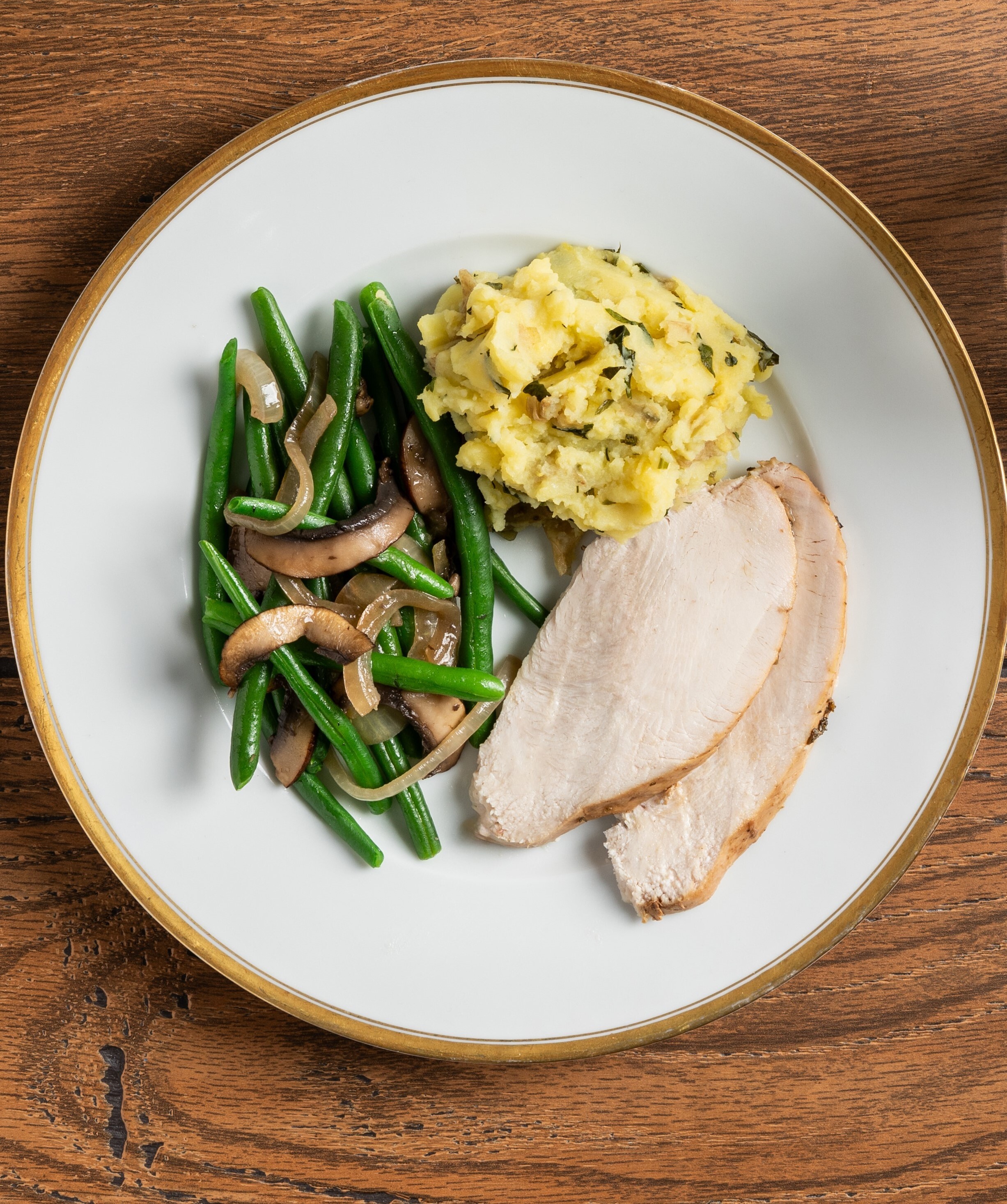Build a Diabetes-Friendly Thanksgiving Plate with Idaho® Potatoes

By using the American Diabetes Association’s Diabetes Plate Method, those living with diabetes and prediabetes can enjoy their favorite Thanksgiving potato dishes.
Eagle, ID, November 8, 2023 – Potatoes are one of Thanksgiving's most popular side dishes. While second and third helpings are customary, just navigating the Thanksgiving meal can be challenging for those living with diabetes. As a new partner with the American Diabetes Association® (ADA), the Idaho Potato Commission (IPC) is stepping in to provide guidelines on how to build a diabetes-friendly Thanksgiving plate using the ADA’s Diabetes Plate Method.
The ADA introduced the Diabetes Plate Method to help those living with diabetes and prediabetes prepare healthy meals that can help manage blood glucose (blood sugar). To equip individuals with the tools necessary to build diabetes-friendly Thanksgiving plates, the IPC created a resource center with visual guides and videos, delicious recipes, and crucial information right in time for Thanksgiving.
“We partnered with the American Diabetes Association to help educate those living with diabetes on how they can incorporate Idaho® potatoes in their meal planning, especially during the holidays, including Thanksgiving,” said Jamey Higham, President and CEO, IPC. “The resource guide on idahopotato.com uses a variety of tools to provide practical and important information so that everyone can enjoy their Idaho potatoes this holiday season.”
The resource center on the IPC website contains:
-
“How To Make A Diabetes-Friendly Holiday Meal” video tutorial using the plate method. Enjoy proteins, veggies, and carbohydrates using the ADA’s serving size guidelines.
-
Downloadable PDF educational card describing five ways to prepare diabetes-friendly Idaho potato dishes including air frying, stuffed baked potatoes, and blending cauliflower into mashed potatoes.
-
Downloadable PDF card with tips and tricks for meal planning and relevant nutrition facts. For example: Idaho potatoes are rich in vitamins and minerals, and leaving their skin on provides additional fiber, potassium, and vitamin C.
-
Collection of diabetes-friendly potato recipes. Be sure to reserve one-quarter of your plate for any of the IPC’s diabetes-friendly recipes, such as Scalloped Potatoes.
The resources support the Diabetes Plate Method and can be referenced all year long.
The Diabetes Plate Method
Step 1: Fill half your plate with non-starchy vegetables.
Non-starchy vegetables are lower in carbohydrates so they do not raise blood glucose much. They are also high in vitamins, minerals, and fiber.
Step 2: Fill one-quarter of your place with lean protein.
Foods high in protein like fish, chicken, lean beef, and soy products are all considered protein foods.
Step 3: Fill the last one-quarter of your plate with carbohydrate foods.
Foods that are higher in carbohydrates include grains, starchy vegetables, beans and legumes, fruit, yogurt, and milk.
Step 4: To complete your meal, add water or another zero-calorie beverage.
Step 5: Choose healthy fats in small amounts.
The true star of any Thanksgiving dinner is the mashed potatoes. The key to enjoying potatoes is knowing how to prepare them healthfully: be mindful of serving size, combine with heart-healthy olive or avocado oils, and prepare with the skins on for added fiber. Adhere to all of these guidelines for a tasty, and nutritious meal.
Herb and Olive Mashed Potatoes
Ingredients:
- 10 baby Idaho golden potatoes, scrubbed and quartered
- ¼ cup lemon juice, freshly squeezed
- 2 tablespoons of extra virgin olive oil
- 1 lemon's zest
- ¼ cup cilantro, finely chopped
- ¼ cup dill, finely chopped
- ½ teaspoon sea salt or kosher salt
- ¼ teaspoon ground black pepper
Directions:
- Place potatoes in a large pot, and cover with water. Bring to a boil over high heat, reduce heat to medium, and cook, uncovered, for 10–15 minutes or until tender.
- Drain. Add lemon juice and olive oil and begin mashing by hand or with an electric mixer.
- When the mixture is smooth and creamy, stir in lemon zest, cilantro, dill, salt, and pepper. Serve warm.
Diabetes is one of the country’s greatest health crises. Every 23 seconds, someone in the U.S. is diagnosed with diabetes and 133 million Americans are living with diabetes or prediabetes. “What can I eat?” is the question the ADA’s Center for Information receives the most bar none. The purpose of the IPC’s partnership with the ADA is to help educate tens of millions of Americans on ways they can add Idaho potatoes to their meal plan.
About The Idaho Potato Commission
Established in 1937, the Idaho Potato Commission (IPC) is a state agency responsible for promoting and protecting the famous “Grown in Idaho®” seal, a federally registered certification mark that assures consumers are purchasing genuine, top-quality Idaho potatoes. Idaho’s growing season of warm days and cool nights, ample mountain-fed irrigation and rich volcanic soil, give Idaho potatoes their unique texture, taste and dependable performance. These ideal growing conditions are what differentiates them from potatoes grown in other states. For more information, visit idahopotato.com.
About the American Diabetes Association
The American Diabetes Association (ADA) is the nation’s leading voluntary health organization fighting to bend the curve on the diabetes epidemic and help people living with diabetes thrive. For 83 years, the ADA has driven discovery and research to treat, manage, and prevent diabetes while working relentlessly for a cure. Through advocacy, program development, and education we aim to improve the quality of life for the over 133 million Americans living with diabetes or prediabetes. Diabetes has brought us together. What we do next will make us Connected for Life®. To learn more or to get involved, visit us at diabetes.org or call 1-800-DIABETES (1-800-342-2383). Join the fight with us on Facebook (American Diabetes Association), Spanish Facebook (Asociación Americana de la Diabetes), LinkedIn (American Diabetes Association), Twitter (@AmDiabetesAssn), and Instagram (@AmDiabetesAssn).
News Categories
Consumer/Retail
Sue Kennedy
Evans, Hardy & Young
(302) 547-3625
Send a Message »
Foodservice
Susan Hughes
Foodservice Consultant
415-819-6531
Send a Message »

